Outram Terrace Library ~ Stoke, Plymouth.
Client : Plymouth City Council.

Plymouth City Council contacted us to take a look at a balcony over the main entrance leading into a library situated in Outram Terrace, Plymouth. They were concerned about some cracks within the balcony and the potential risk of falling masonry.

The building is a period property that had been built during the late Victorian era. It is constructed in face brick with decorative Portland stone detailing. The cracks had appeared in the corbelled brackets supporting the balcony.
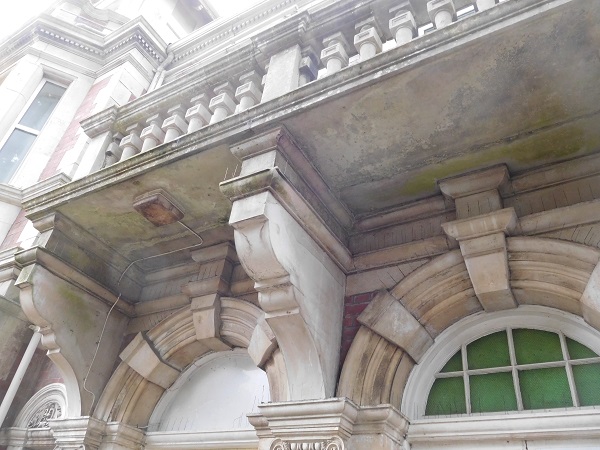
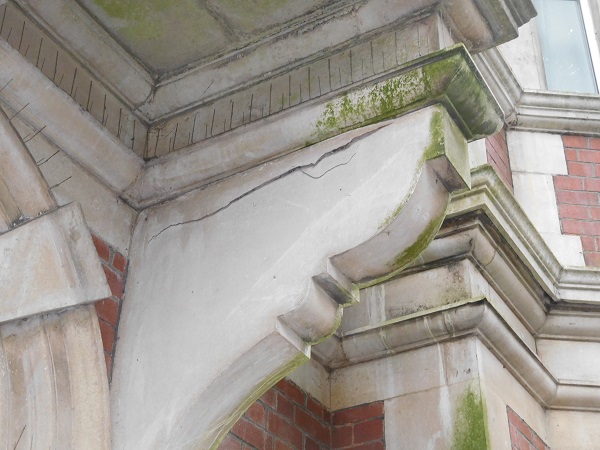
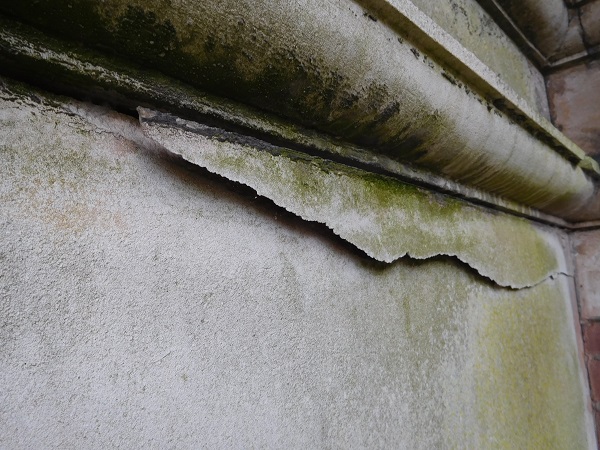
It didn’t take much effort to remove these damaged sections of masonry, they were just taken out by hand.
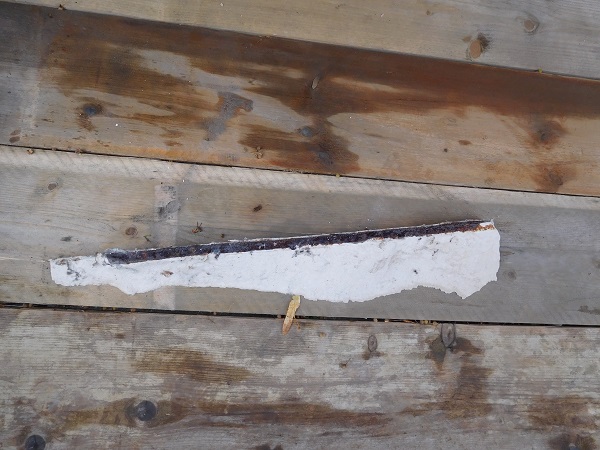
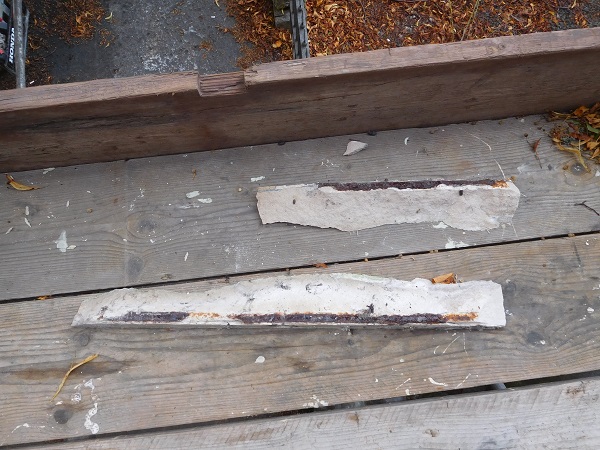
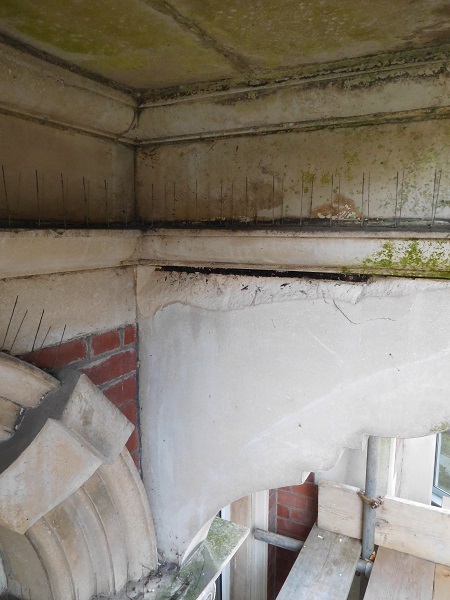
The cause of this spalling was due to the original iron fixings used in the construction of the balcony. Iron or steel clamps used for these fixings have been for centuries. When they rust, they become iron oxide and when this expands it very often forces the face of the stone to spall away or even split a stone in two. This is known as ‘Oxide Jacking’ or ‘Rust Burst’, a phenomenon that has caused much damage to our historic buildings. The affected areas were marked out and cut back to expose the rusted iron fixings.

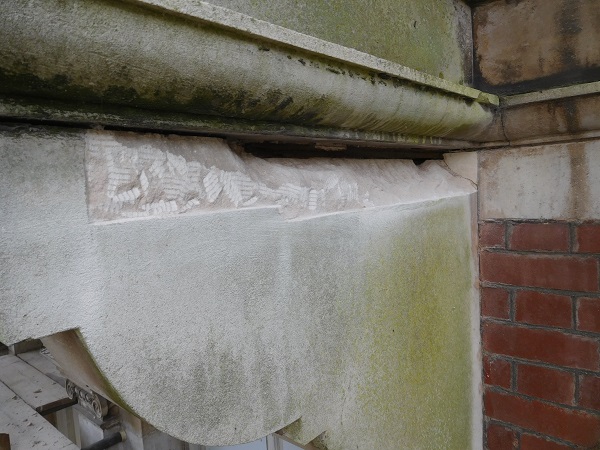
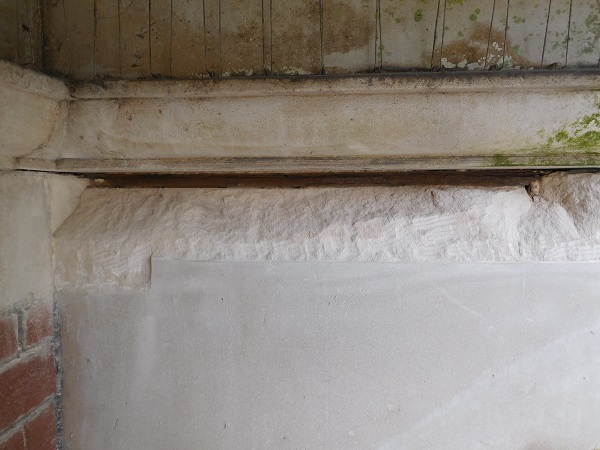
The rusted iron was de-scaled and treated with a slurry coat of cement containing an S.B.R. additive to seal everything in.
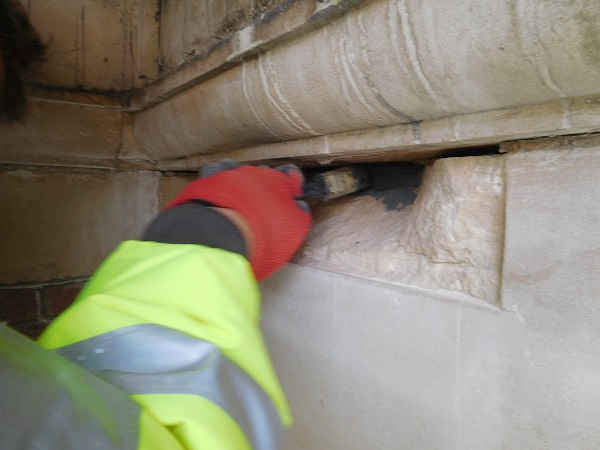
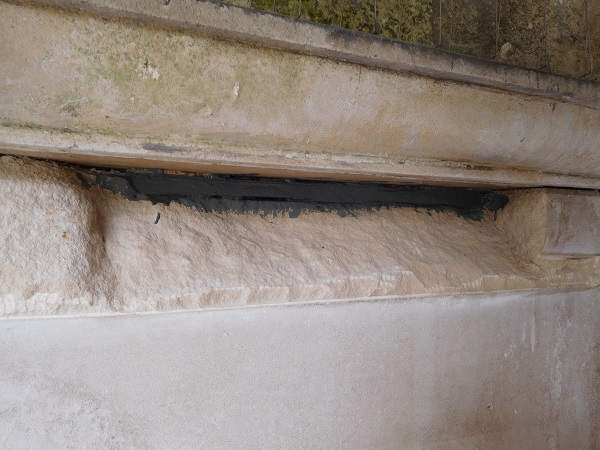
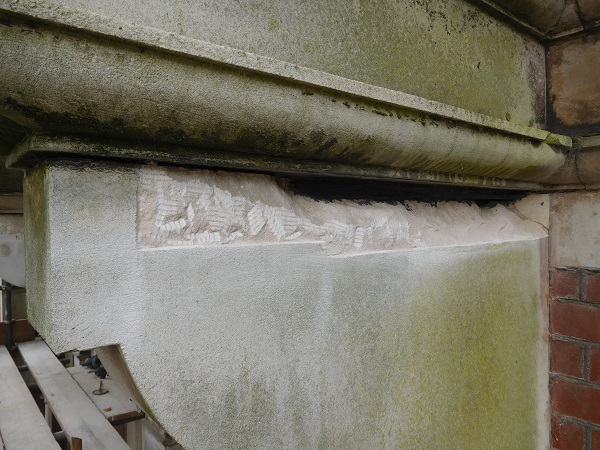
The prepared cut-outs were then stabilised with ‘SecilTEK AD 25’ silicate primer. Silicate based primers and paints were initially developed for King Ludwig I of Bavaria in the 18th century for his castles. He wanted a paint that looked and performed as well as lime wash but was much more durable in the harsh winter climates. Examples of these paint systems still exist in Germany to this day more than a hundred years later. The primer we applied forms a chemical bond with the stone, it not only stabilizes the loose surfaces, it has high water resistant properties and more importantly as it is one of the most ‘breathable’ primers on the market, it allows the stone to breathe.
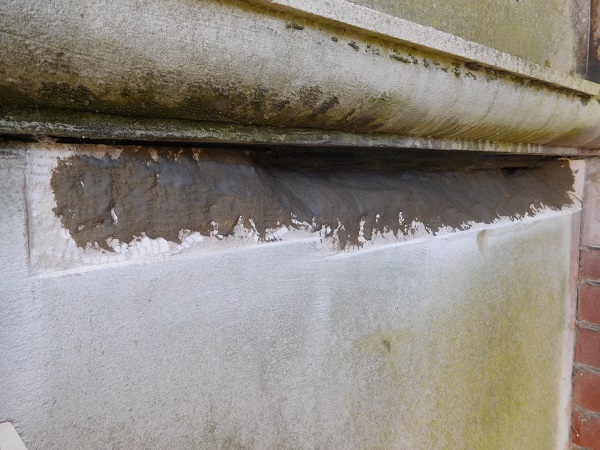
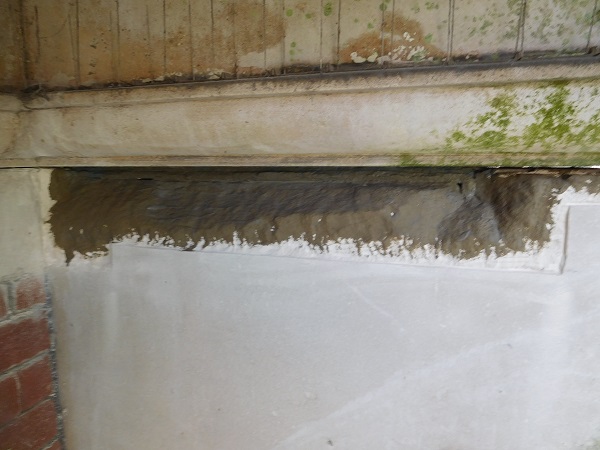
These areas were then built out and finished off flush to the existing stonework using a lime based Portland stone repair mortar. In total three repairs were carried out to the corbelled brackets.

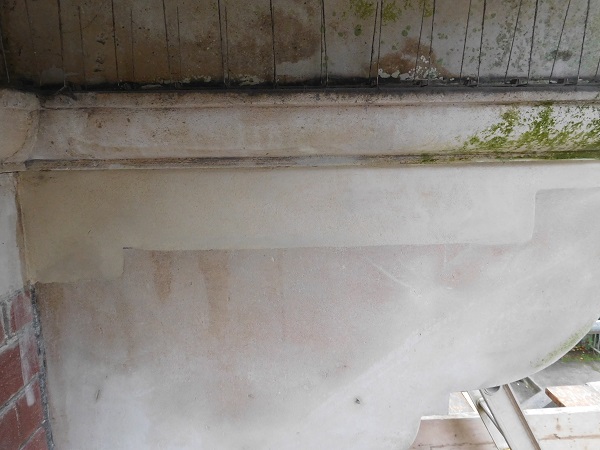
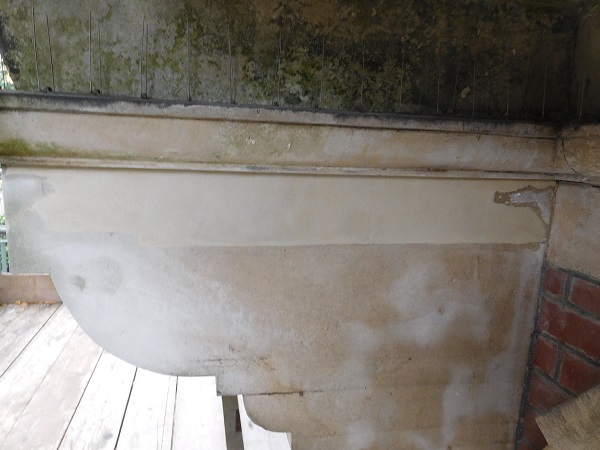
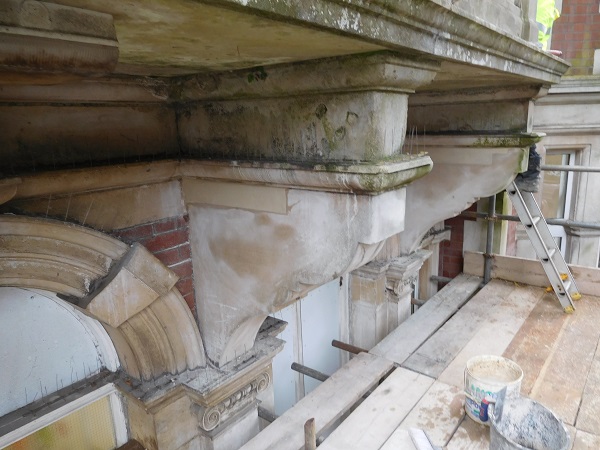
We also carried out some minor re-pointing to the balustrading above.
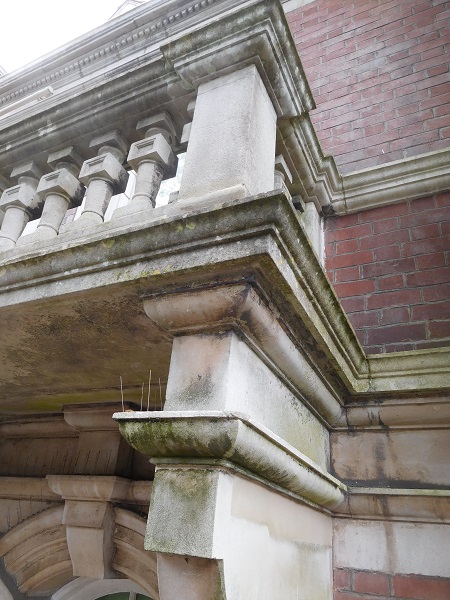
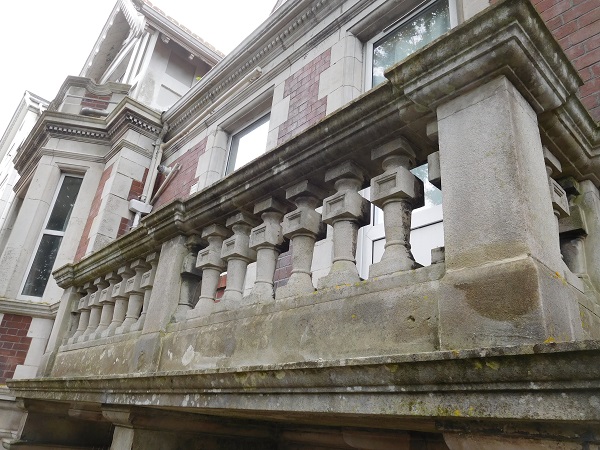
That was the repair work completed, but there are some nice architectural features around the building including ‘Ionic’ capitals. An Ionic capital is a decorative element placed on top of a column, specifically within the Ionic order of classical architecture. It is characterized by its distinctive volutes, which are paired spiral scrolls on each side of the capital. The Ionic order, in general, is known for its slender proportions and ornate details, often used in Classical, Renaissance and Neoclassical architecture. The volutes are paired spiral scrolls and above the volutes there’s an abacus, a rectangular plate, which sits at the top of the capital. The volutes typically rest on an ‘Echinus’, a decorative moulding, often carved with egg-and-dart patterns.

Above two of the windows on either side of the main entrance are some arched ‘Lunettes’, depicting the date that the building was constructed. A lunette translates as ‘little moon’ in French and these are typically a crescent, half-moon shaped or semi-circular architectural space or feature, variously filled with sculpture, painted, glazed, filled with recessed masonry or just left void. One lunette here is carved with the letters A.D. whilst the other has the inter-locking numerals of 1897.
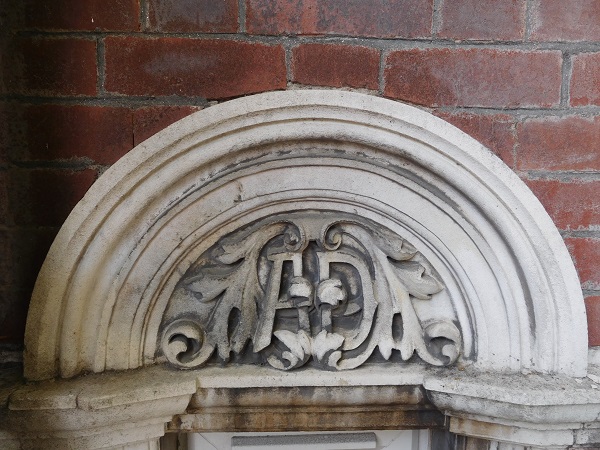
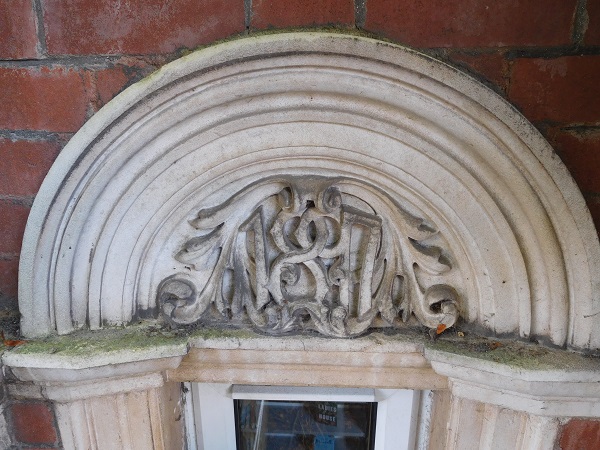
Due to cut-backs the library closed its doors in 2017.


